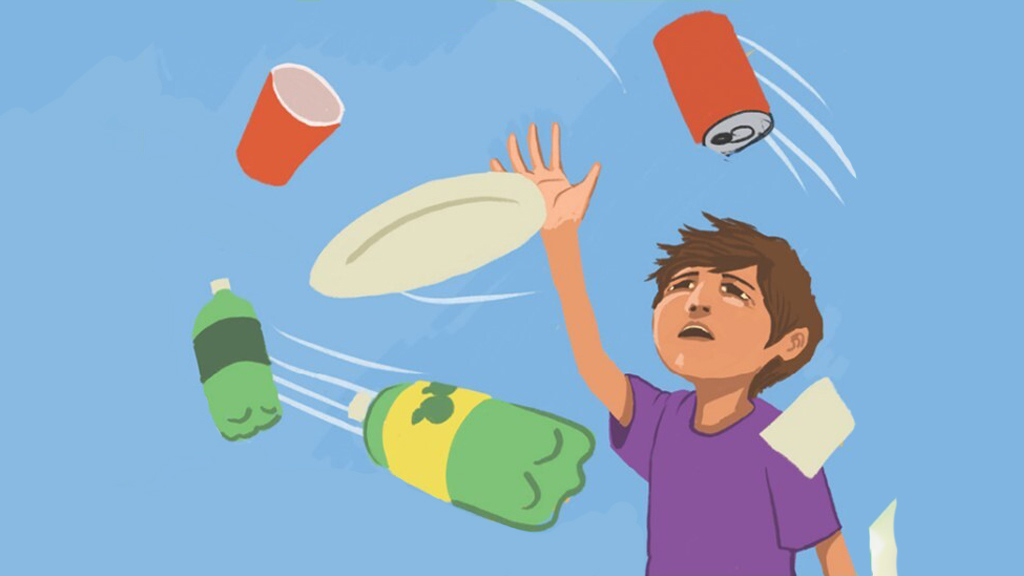Brief
Open-Ended Engineering at Family STEM Events
Between 2013 and 2015 EiE, the curricula division of the Museum of Science, Boston, conducted a randomized controlled trial of in-school engineering curricula with more than 14,000 students. We found that our specific design principles resulted in better engineering and science learning outcomes for students of all demographics relative to a control curriculum. These principles included an engaging narrative context, a structured engineering design process, and an open-ended challenge with multiple solutions (Lachapelle et al. 2019).
Encouraged by these findings, we applied these principles in a different setting: family STEM events. Often, these events are held at a school during an evening or weekend and facilitated by teachers, students, families, or other community members. Families participate in one or more science, math, or engineering activities. Unlike in-school learning, STEM event activities tend to be brief and involve minimal instruction from educators. Since 2018 we have developed and tested two activities, designed specifically for STEM event settings, that encourage families to solve engineering challenges.
One of EiE’s design principles is engaging narrative context (Cunningham and Lachapelle 2016; Cunningham 2018). Given the time limitation at a STEM event, this context takes the form of a short comic strip, available on a poster and in a booklet. This comic shows the challenge and gives a reason to care about solving it. For example, in the Pick It Up! activity comic, wind blows trash from an outdoor party into a nearby gulley. Without this context, families are merely pulling objects out of a taped-off square on the floor. With it, they are designing ways to clean a local green space.
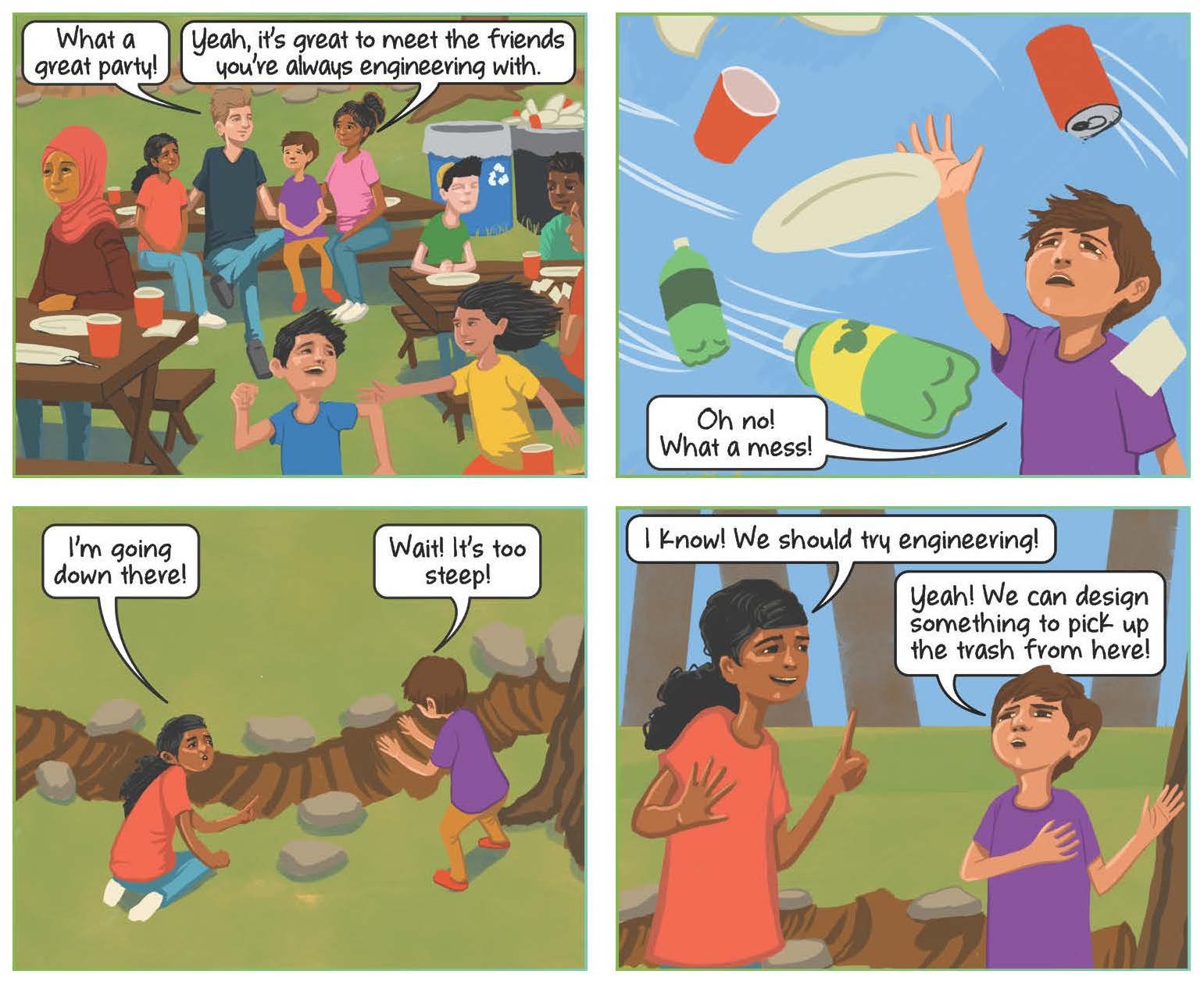
Another principle is the use of a structured engineering design process, which includes imagining various possible solutions and improving designs (Cunningham and Lachapelle 2016; Cunningham 2018). Because educators may not be available to explain these steps in detail at a STEM event, a supportive Family Activity Guide contains our five-step process and prompts for each step. This process helps families understand the iterative nature of engineering: in testing, educators reported that families specifically discussed design failures and ways to improve.
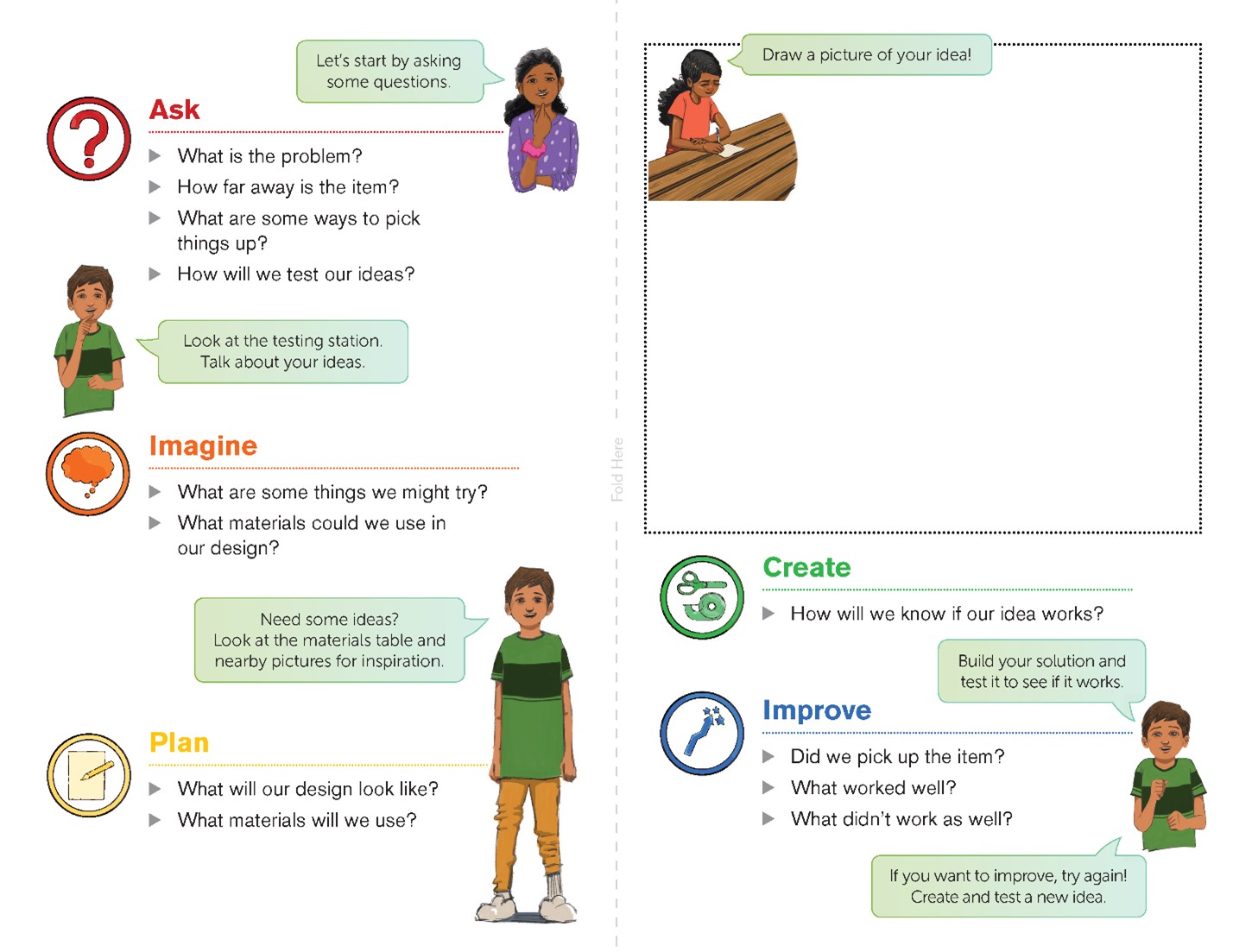
Finally, we applied the principle of keeping challenges open-ended (Cunningham and Lachapelle 2016; Cunningham and Kelly 2017; Cunningham 2018). We allow multiple solutions for the technologies families design and the materials they use. For example, in Get Down! participants are tasked with safely removing a toy drone (fidget spinner) from a tree (chair or box). The challenge gives them a wide variety of materials, including straws, cheesecloth, and clothespins, which they can use to make any technology that solves the problem, be it a slide, zipline, staircase, crane, pulley, or ramp. To support the Imagine step, given the lack of time for families to research solutions, we provided a Solution Visual Poster showing various technologies that solve the problem of picking up objects.
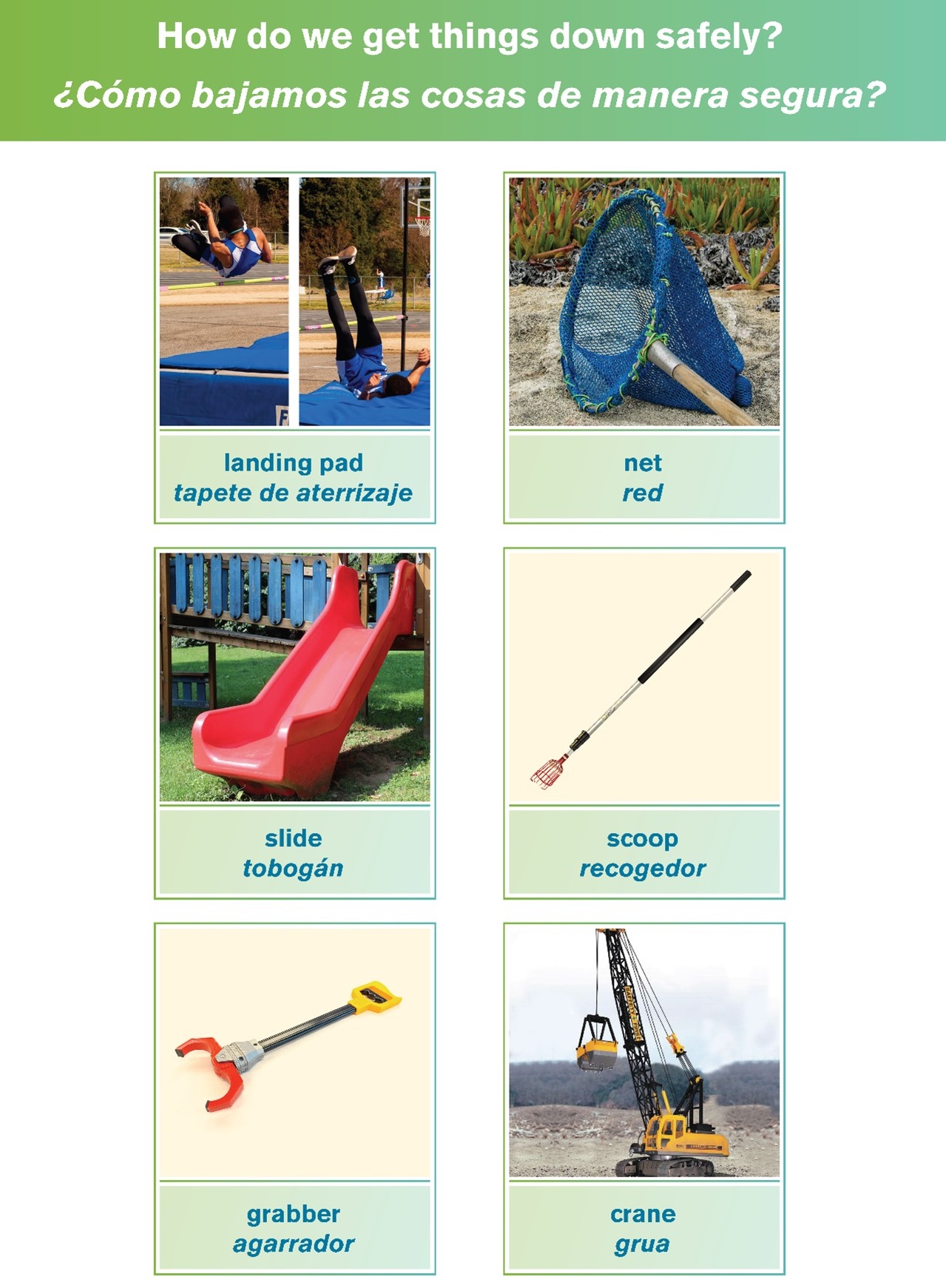
During testing, educators reported high family engagement. Their comments highlight our design principles:
- “The story really was real-world and one that everyone seemed to immediately connect to, which helped them while engineering. Also, having actual “trash” seemed to make it more engaging because we have all had a cup or napkin blow away in the wind.”
- “The clear step-by-step process of the activity worked well.”
- “I was pleased to see so many different ways to pick up the garbage ... Kids and parents all got engaged right away.”
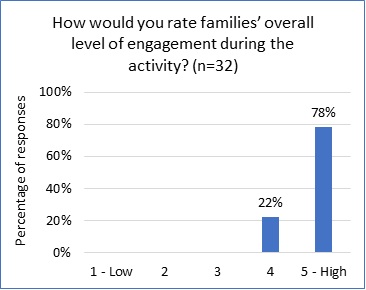
We continue to learn from implementation of these activities and add improvements, such as step-by-step guidance for facilitators and tips for providing various levels of challenge. We are excited to further explore ways to apply curriculum design principles in settings that connect school and home.
Derek Butterton is a curriculum developer at the Museum of Science, Boston, in Boston, Massachusetts.
Engineering Science and Engineering Practices STEM Elementary Informal Education



